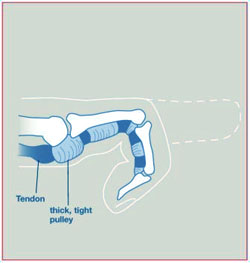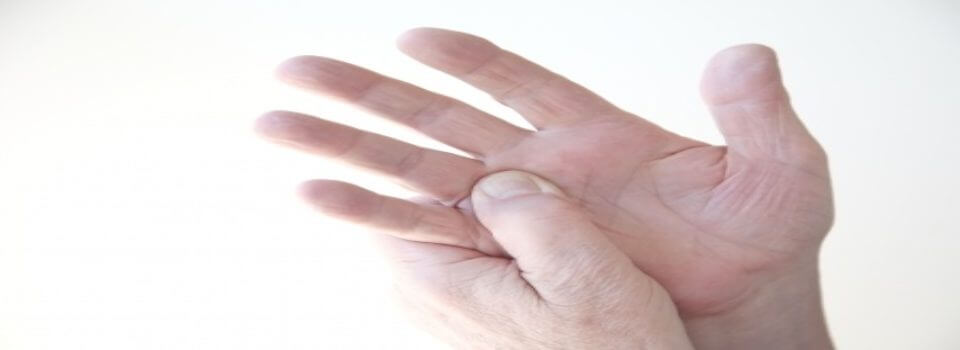 Over time, the finger may lock and become hard to bend and straighten.
Over time, the finger may lock and become hard to bend and straighten.
What is it?
Trigger finger/thumb is the more common name for stenosing tenosynovitis. Hand tendons are like long rope pulleys that connect the forearm muscles to the small bones in the fingers and thumb. The pulleys in the finger pass through a tunnel of rings. This tunnel has a smooth lining that lets the tendons easily slide through the pulleys.
The condition occurs when the pulley located at the finger’s base thickens, narrowing the passage and making it difficult for the tendon to pass through the pulley. This added resistance might cause pain, popping or a feeling of catching. Catching of the tendon irritates and swells the pulley, resulting in a cycle that continues to thicken the pulley. Over time, the finger may lock and become hard to bend and straighten.
What causes it?
Although the cause is not always clear, sometimes the condition is associated with rheumatoid arthritis, gout and diabetes.
 What are the symptoms?
What are the symptoms?
The first sign might be some discomfort or tenderness in the base of the finger/thumb. Additionally, it’s possible that a nodule will form in this area.
How do we diagnose it?
Your physician does not need to use any elaborate test to diagnose trigger finger. The diagnosis is based on a simple physical exam and knowledge of medical history. The exam involves the patient opening and closing the hand while we check for pain and observe ease of movement.
How is it treated?
We seek to stop the locking to restore the normal range of movement of the thumb/finger. The swelling must be brought down in order to permit easy gliding of the tendon. Patients may use a splint, oral anti-inflammatory medicine, or simply change activities to decrease swelling. Sometimes it’s effective to use steroid injections in the area near the tendon and pulley.
If these treatments do not succeed in relieving symptoms, we advise a simple outpatient surgery to open the pulley to allow easy gliding. Usually this restores active motion immediately after the procedure. Tenderness and discomfort can occur after surgery in some patients for varying time periods.


